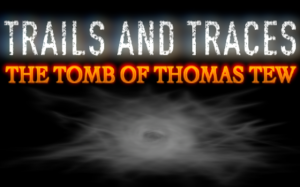Review for Epitasis

The search for extraterrestrial intelligence officially began in 1984 and so far has come up empty. But what if the telescopes continuously searching the sky found something? And what if you were the scientist to make that discovery? That is the premise of Epitasis, in which one day at an observation station you detect a signal from the Lyra constellation relaying coordinates to a remote mountain area of Earth. Even more incredibly, the portal you discover there transports you to a far-off planet, but rather than little green men you find a series of puzzles to solve. While disappointed that I never did learn much about the aliens who sent the message, once I delved into the many puzzles their civilization left behind across a variety of landscapes with interesting horizons, I thoroughly enjoyed the experience.
Upon launching Epitasis you find yourself at the Large Collector Array in New Mexico, where you are monitoring data from the station’s satellites. While there is no formal tutorial, here you will become familiar with the basic interface, with the WASD keys used for navigation and the mouse to look around and interact with objects. When the array begins realigning, resulting in a promising signal, the next thing you know you are leading a team to the designated coordinates at a base camp in a remote mountain region. Here you’ll acquire a flashlight and make your way to a strange cave containing a mysterious looking portal. As you pass through, the photorealistic graphics of Earth change significantly to a much more surreal but far less textured world with vibrant, fluorescent colours. This style persists for the remainder of the game and is used to good effect in the many varied locations you visit.
Proceeding into a courtyard with elevated bases that define the four corners of its perimeter, you discover a strange cylindrical object that appears to need activating. An artifact can be found nearby that is added to your inventory, and when you use it on the object suddenly four geometric shapes appear over the bases – a triangle, square, hexagon and circle – with bizarre-looking portals behind them. Clearly you need to travel through these portals to uncover the hidden mysteries of this alien planet. It may seem that you can enter them in any order you choose, but it soon becomes apparent that one of them will require help from an as-yet-unknown source. The others can be explored in any sequence, and the balance of the game will be played in these four distinct areas. You will need to solve each of their puzzles in order to succeed, but you can move between the first three as you please.
No matter which portal you approach, it will treat you to an excellent combination of sound and visual effects. You can look through it from any angle and it will adjust what you see within it accordingly. As you get closer, the sound of a high-pitched wind gets louder and lines of light begin pulling you in, fully immersing you in the experience. When you arrive on the other side you will notice two things immediately. First, the world before you is vast and beautiful, with sweeping vistas and interesting backdrops of large colourful planets with orbiting moons, meteorites streaking across the horizon, and other celestial bodies in the sky. You’ll also encounter fortress-like structures with many towers surrounding them, rivers, streams and seas complete with beaches, waterfalls, rock cliffs and more. It really is quite beautiful.
The second thing that will catch your attention right away is the enjoyable synthesized music that starts playing in the background. The score can be either soothing or compelling, depending on where you are and what you are doing. If you are just exploring the countryside you will hear a relaxed looping melody, but in puzzle areas the tune will ramp up to add more excitement and tension. This, coupled with the excellent sound effects such as rainfall, ocean waves and mechanical platforms locking into place, really adds to the atmosphere.
Most places have day/night cycles, which come and go very quickly so be sure to have your flashlight handy when nighttime comes around. Some levels also have weather effects, so it might begin to rain without warning and just as suddenly clear up. As I explored each portal’s environment, I was never quite sure if I was transporting to different locations on the same planet, or different planets in a contained solar system. If I had to guess I would say it was the latter, as the night sky did not always show the same star formations.
Each distinct territory is quite large and you can explore as much of it as you like, but you will bump into unseen barriers if you stray too far. Eventually you’ll be drawn to a series of curious towers. The goal is to activate each sub-tower to point a laser at the main tower to gain access to the geometric shape associated with that region. How you do this varies greatly on where you are, and you will need to complete several individual puzzles in order to solve the main one. There are a lot of them in each level, and they follow pretty much the same formula. You must find various cubes scattered around the vicinity to place on platforms to either disable a force field and gain entry to a new area, or activate a laser that in turn will power up another force field or platform and ultimately the laser pointing at one of the towers. Along the way you also have to find power cells to fuel different devices and push switches to redirect lasers or enable various systems.
As I worked through each puzzle, I was very much reminded of two games I really enjoyed, The Talos Principle and The Witness. Indie developer Lucas Govatos was obviously inspired by the former in the use of cubes and lasers to open doors, but maybe not so apparent is the similarity to the latter in activating a number of laser towers to gain access to the final main puzzle. It is important to note, however, that while Epitasis bears a strong resemblance to those games, the puzzles themselves are far less difficult.
That being said, there are two puzzles in particular that I had trouble with. The first requires lining up planets orbiting a star in a console simulation. Although there is a subtle clue as to what to do, I missed it and needed to consult a walkthrough. Yet even after I knew what was needed I had to use trial and error to complete the task. The second (and most egregious) is an “octocube” puzzle in the hexagon level. As you explore the various portals you will run across strange red cubes that you can collect in inventory. Other than learning that they can be used to activate a device, you know nothing about them. As it turns out, the cubes are needed to solve this particular puzzle but there is no indication of how many you need until you reach it. If you missed any during your travels, you need to backtrack to where you think you may have overlooked one – or just roam aimlessly until you stumble across it – and then return to complete the puzzle, which is very frustrating.
Apart from these two tougher puzzles and a few that are quite easy, I found the others challenging enough to be fun to solve. A nice touch I have not seen in other games of this type is the option to “restart current puzzle” in the main game menu, which undoes all your progress for that particular one. While I never had to use it, if you get hopelessly stuck on a particular puzzle you can start from scratch without having to restore from a save point.
Complicating your task is not only the size of each level to explore, but the existence of sub-portals that lead you to new, often equally expansive regions – and in some cases a sub-portal within the sub-portals. This can easily lead to disorientation, and since there is no navigation system built into the game, you need to keep careful track of where you are and how you got there in order to be able to get back. In some cases the sub-portals lead to other geometric shape realms entirely. I attempted to map out every area with notations of where each sub-portal was located, but this proved difficult given the vastness of the territories and the interlinking of different regions, so I gave up and relied on memory and some experimentation to find my way.
It is possible to die in Epitasis by falling off a cliff or high building, in which case you will be immediately restored to the point before you made your mistake. You can also be killed by one of the hostile red drones that populate some levels and try to impede your progress. If you get zapped, you are returned to where you first started to solve that particular puzzle, though all your progress will be saved. This is somewhat in keeping with the game’s autosave feature. I thought I would be restored to where I exited the game, but when I started a new session I was placed just inside the portal of that region. My progress was preserved but sometimes this meant having to travel a fair way to get back to where I was. I also got physically stuck three different times, so that I couldn’t move and was forced to restore my game to continue, although otherwise the game played without issue.
The inventory system is similarly quirky: you can store multiple items and get a description when you mouse over one. But to use something you just need to click on an object in the environment that might need it and it will automatically be done. I am used to dragging and dropping acquired items onto the game screen, so the lack of any thought required here was a bit of an adjustment. There is no option to manipulate or combine objects in inventory either.
Your time in Epitasis is solitary, as there are no characters to interact with save the companion drone that will follow you (once discovered) and do your bidding to open doors, activate bridges and so on as needed. Many levels have hovering drones (which are quite adorable) floating around, but as far as I could tell there is no way to communicate with them. And while the developers did a good job of populating each portal area with plenty of flora – there are trees, grass and plants of all different colours – there is absolutely no fauna: no birds, insects, animals or fish – nothing. I found this to be a surprising omission. If you are building an alien world and putting your player in it all alone, why not provide some other species to add to the sense of an extraterrestrial adventure?
While I very much enjoyed the exploration and puzzle solving, I was disappointed in the lack of purpose behind all this. Why would an advanced alien civilization take the time to invite sentient beings to visit their world only to send them through a pointless series of puzzles? Could it be to test their intelligence and become worthy of contact? If so, why not end the game with that scenario? In The Talos Principle you are an AI unit being tested, and in The Witness the accomplishments of humanity are being recognized. But here there are only questions at the end, even as to your own fate.
According to Wikipedia, “in classical drama, the epitasis (Ancient Greek: ἐπίτασις) is the main action of a play, in which the trials and tribulations of the main character increase and build toward a climax and dénouement.” In looking back at my time playing this game, it is quite a fitting title until the climactic letdown that left me no further ahead than when I started. Don’t get your hopes up for some sort of cosmic first contact, or even expect to learn much about this species from what they left behind. But while questions remain, there is no doubt that as a puzzle game Epitasis excels with varied, well thought-out gameplay that will take you a solid 8-10 hours to finish, accompanied by a great musical score and vibrant, expansive regions to explore. It’s all about the journey here, rather than the destination.
WHERE CAN I DOWNLOAD Epitasis
Epitasis is available at:
- Itch.io -50%
Our Verdict:
Though it lacks the strong narrative underpinning of its better inspirations, there is a lot to like in Epitasis for those who enjoy the gameplay of The Talos Principle, The Witness and similar exploratory puzzle games.






























